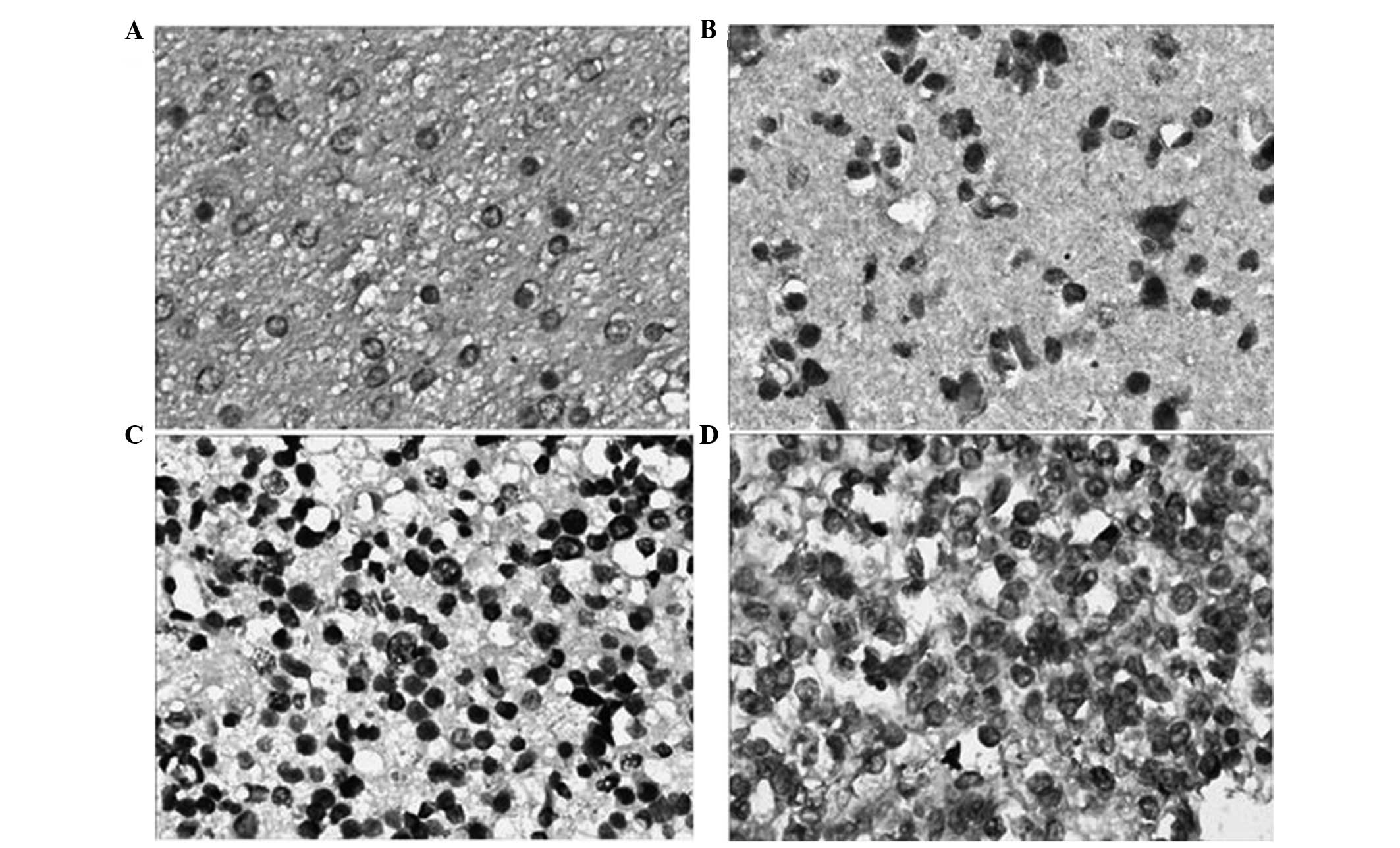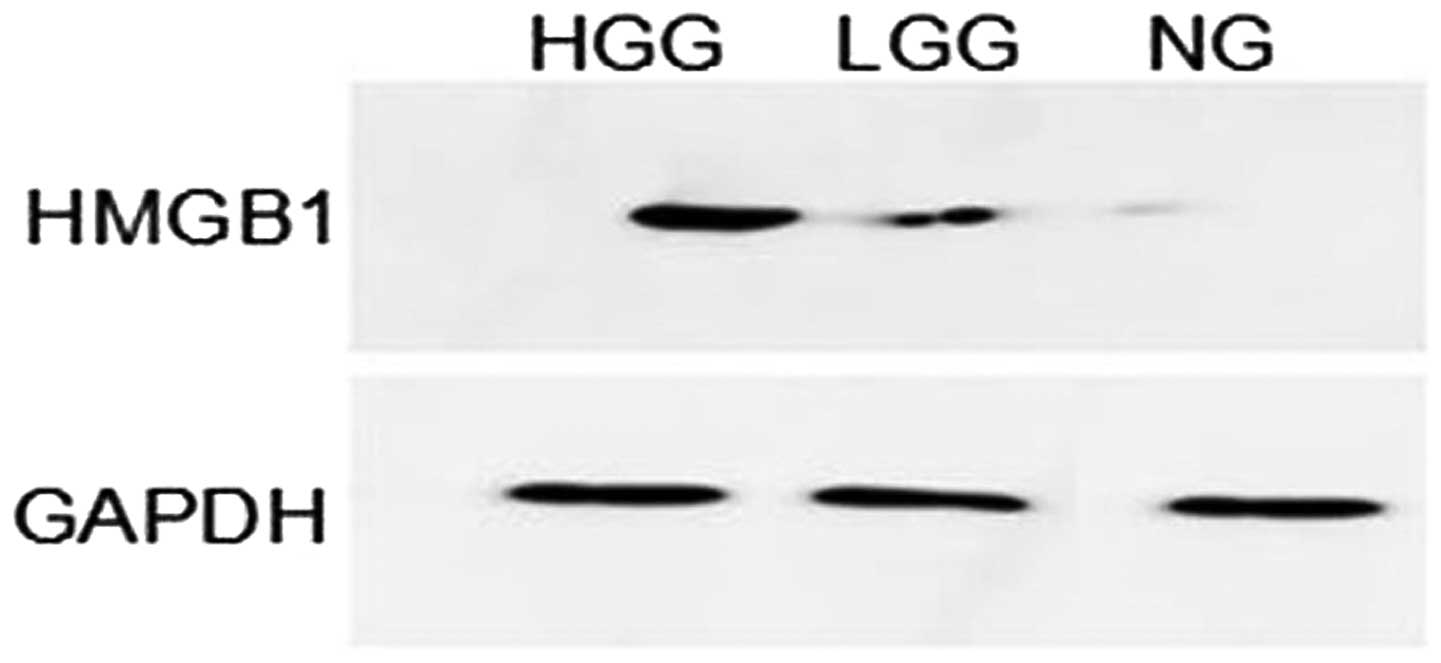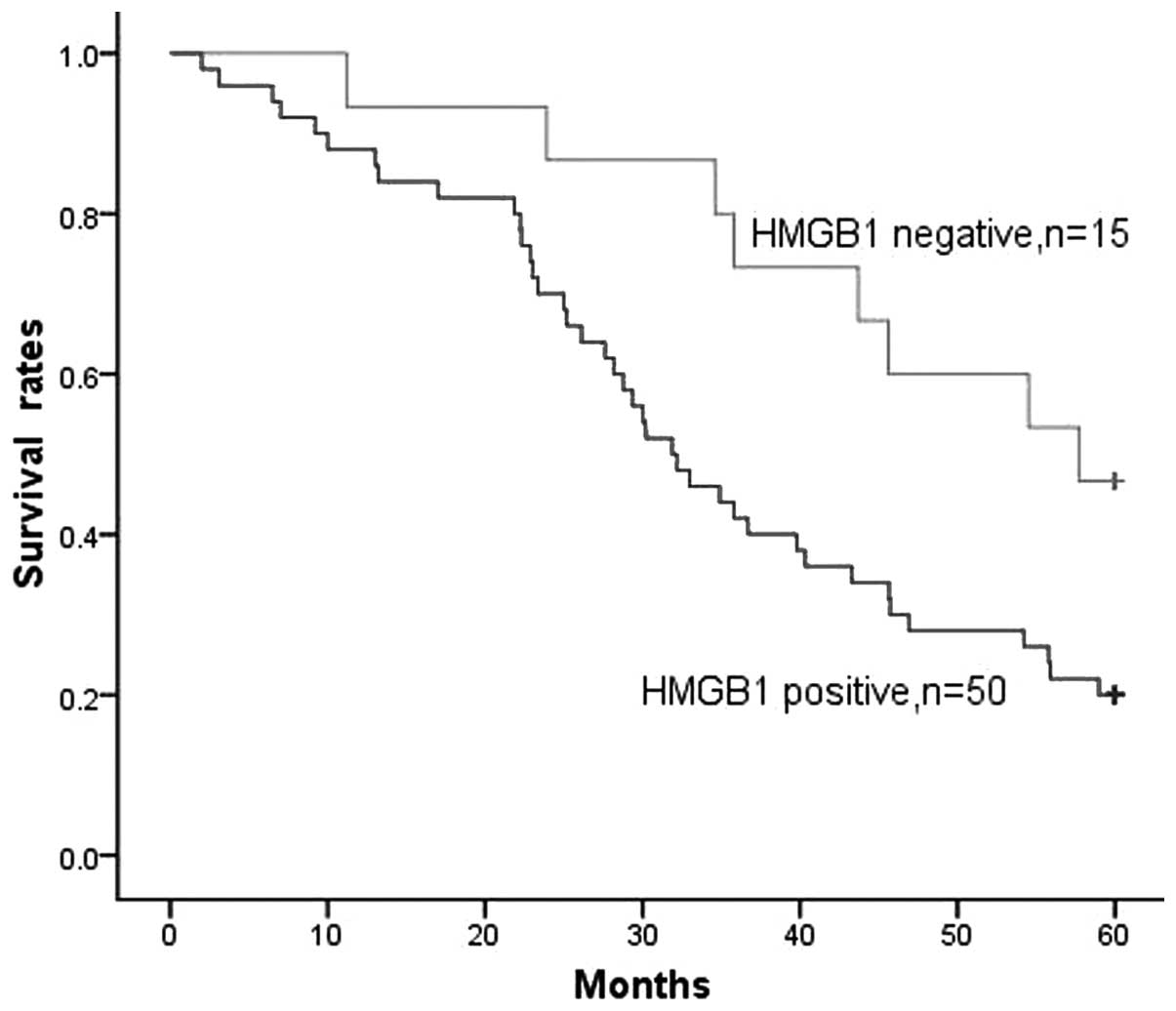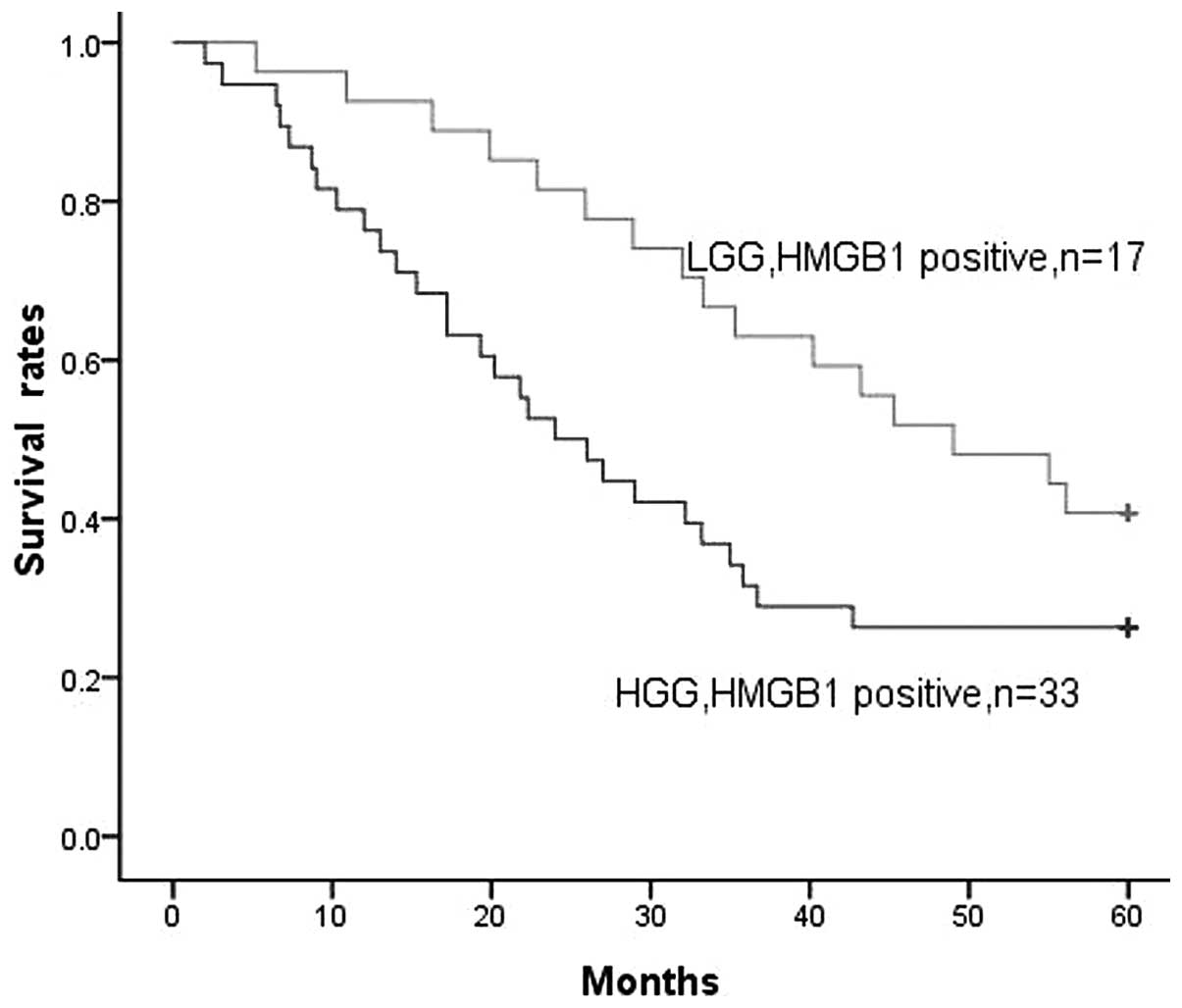|
1
|
Kong BH, Park NR, Shim JK, et al:
Isolation of glioma cancer stem cells in relation to histological
grades in glioma specimens. Childs Nerv Syst. 29:217–229. 2013.
View Article : Google Scholar
|
|
2
|
Chamberlain MC: Treatment of newly
diagnosed malignant glioma in the elderly people: new trials that
impact therapy. Int J Clin Pract. 67:1225–1227. 2013. View Article : Google Scholar : PubMed/NCBI
|
|
3
|
Kim SM, Woo JS, Jeong CH, et al: Potential
application of temozolomide in mesenchymal stem cell-based TRAIL
gene therapy against malignant glioma. Stem Cells Transl Med.
3:172–182. 2014. View Article : Google Scholar : PubMed/NCBI
|
|
4
|
Stros M: HMGB proteins: interactions with
DNA and chromatin. Biochim Biophys Acta. 1799:101–113. 2010.
View Article : Google Scholar : PubMed/NCBI
|
|
5
|
Belgrano FS, de Abreu da Silva IC, Bastos
de Oliveira FM, et al: Role of the acidic tail of high mobility
group protein B1 (HMGB1) in protein stability and DNA bending. PLoS
One. 8:e795722013. View Article : Google Scholar : PubMed/NCBI
|
|
6
|
Fahmueller YN, Nagel D, Hoffmann RT, et
al: Immunogenic cell death biomarkers HMGB1, RAGE, and DNAse
indicate response to radioembolization therapy and prognosis in
colorectal cancer patients. Int J Cancer. 132:2349–2358. 2013.
View Article : Google Scholar
|
|
7
|
Stoetzer OJ, Fersching DM, Salat C, et al:
Circulating immunogenic cell death biomarkers HMGB1 and RAGE in
breast cancer patients during neoadjuvant chemotherapy. Tumour
Biol. 34:81–90. 2013. View Article : Google Scholar
|
|
8
|
Gupta P, Ghosh S, Nagarajan A, et al:
β-defensin-3 negatively regulates TLR4-HMGB1 axis mediated HLA-G
expression in IL-1β treated glioma cells. Cell Signal. 25:682–689.
2013. View Article : Google Scholar
|
|
9
|
Brat DJ, Scheithauer BW, Fuller GN and
Tihan T: Newly codified glial neoplasms of the 2007 WHO
Classification of Tumours of the Central Nervous System:
angiocentric glioma, pilomyxoid astrocytoma and pituicytoma. Brain
Pathol. 17:319–324. 2007. View Article : Google Scholar : PubMed/NCBI
|
|
10
|
Goodenberger ML and Jenkins RB: Genetics
of adult glioma. Cancer Genet. 205:613–621. 2012. View Article : Google Scholar : PubMed/NCBI
|
|
11
|
Sahgal A, Ironside SA, Perry J, et al:
Factors influencing overall survival specific to adult low-grade
astrocytoma: a population-based study. Clin Oncol (R Coll Radiol).
25:394–399. 2013. View Article : Google Scholar
|
|
12
|
Zhang X, Yang H, Gong B, et al: Combined
gene expression and protein interaction analysis of dynamic
modularity in glioma prognosis. J Neurooncol. 107:281–288. 2012.
View Article : Google Scholar
|
|
13
|
Huang J, Ni J, Liu K, et al: HMGB1
promotes drug resistance in osteosarcoma. Cancer Res. 72:230–238.
2012. View Article : Google Scholar
|
|
14
|
Youn JH and Shin JS: Nucleocytoplasmic
shuttling of HMGB1 is regulated by phosphorylation that redirects
it toward secretion. J Immunol. 177:7889–7897. 2006. View Article : Google Scholar : PubMed/NCBI
|
|
15
|
Schlueter C, Weber H, Meyer B, et al:
Angiogenetic signaling through hypoxia: HMGB1: an angiogenetic
switch molecule. Am J Pathol. 166:1259–1263. 2005. View Article : Google Scholar : PubMed/NCBI
|
|
16
|
Tang D, Kang R, Zeh HJ III and Lotze MT:
High-mobility group box 1 and cancer. Biochim Biophys Acta.
1799:131–140. 2010. View Article : Google Scholar : PubMed/NCBI
|
|
17
|
Guerriero JL, Ditsworth D, Catanzaro JM,
et al: DNA alkylating therapy induces tumor regression through an
HMGB1-mediated activation of innate immunity. J Immunol.
186:3517–3526. 2011. View Article : Google Scholar : PubMed/NCBI
|
|
18
|
Hui L, Yao Y, Wang S, et al: Inhibition of
Janus kinase 2 and signal transduction and activator of
transcription 3 protect against cecal ligation and puncture-induced
multiple organ damage and mortality. J Trauma. 66:859–865. 2009.
View Article : Google Scholar : PubMed/NCBI
|
|
19
|
Wagner KU and Schmidt JW: The two faces of
Janus kinases and their respective STATs in mammary gland
development and cancer. J Carcinog. 10:322011. View Article : Google Scholar
|
|
20
|
Diaz T, Navarro A, Ferrer G, et al:
Lestaurtinib inhibition of the Jak/STAT signaling pathway in
hodgkin lymphoma inhibits proliferation and induces apoptosis. PLoS
One. 6:e188562011. View Article : Google Scholar : PubMed/NCBI
|
|
21
|
Rauvala H and Rouhiainen A: Physiological
and pathophysiological outcomes of the interactions of HMGB1 with
cell surface receptors. Biochim Biophys Acta. 1799:164–170. 2010.
View Article : Google Scholar
|
|
22
|
Ohmori H, Luo Y and Kuniyasu H:
Non-histone nuclear factor HMGB1 as a therapeutic target in
colorectal cancer. Expert Opin Ther Targets. 15:183–193. 2011.
View Article : Google Scholar : PubMed/NCBI
|
|
23
|
Bassi R, Giussani P, Anelli V, et al:
HMGB1 as an autocrine stimulus in human T98G glioblastoma cells:
role in cell growth and migration. J Neurooncol. 87:23–33. 2008.
View Article : Google Scholar
|
|
24
|
Tang D, Kang R, Cheh CW, et al: HMGB1
release and redox regulates autophagy and apoptosis in cancer
cells. Oncogene. 29:5299–5310. 2010. View Article : Google Scholar : PubMed/NCBI
|
|
25
|
Wittwer C, Boeck S, Heinemann V, et al:
Circulating nucleosomes and immunogenic cell death markers HMGB1,
sRAGE and DNAse in patients with advanced pancreatic cancer
undergoing chemotherapy. Int J Cancer. 133:2619–2630.
2013.PubMed/NCBI
|
|
26
|
Naglova H and Bucova M: HMGB1 and its
physiological and pathological roles. Bratisl Lek Listy.
113:163–171. 2012.PubMed/NCBI
|
|
27
|
Kostova N, Zlateva S, Ugrinova I and
Pasheva E: The expression of HMGB1 protein and its receptor RAGE in
human malignant tumors. Mol Cell Biochem. 337:251–258. 2010.
View Article : Google Scholar
|
|
28
|
Jube S, Rivera ZS, Bianchi ME, et al:
Cancer cell secretion of the DAMP protein HMGB1 supports
progression in malignant mesothelioma. Cancer Res. 72:3290–3301.
2012. View Article : Google Scholar : PubMed/NCBI
|
|
29
|
Martins I, Kepp O, Menger L, et al:
Fluorescent biosensors for the detection of HMGB1 release. Methods
Mol Biol. 1004:43–56. 2013. View Article : Google Scholar : PubMed/NCBI
|
|
30
|
Yang GL, Zhang LH, Bo JJ, et al: Increased
expression of HMGB1 is associated with poor prognosis in human
bladder cancer. J Surg Oncol. 106:57–61. 2012. View Article : Google Scholar : PubMed/NCBI
|


















